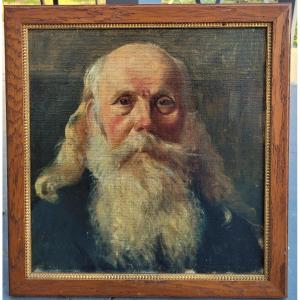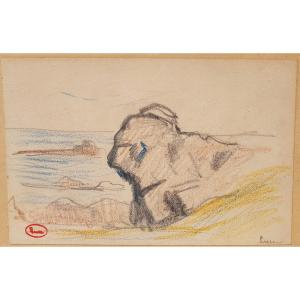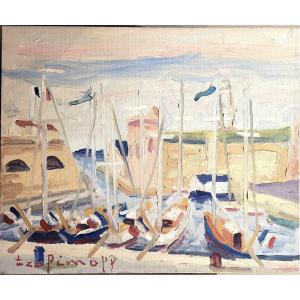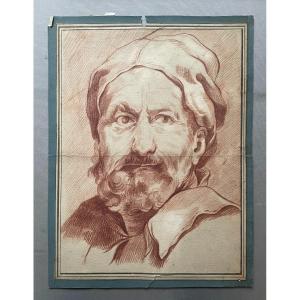Jules Péaron was first a rural postman then obtained a scholarship from his hometown to study drawing. In Paris, he entered the Ecole des Beaux-Arts, he was a student of L. Cogniet and J. Quentin.
In 1867, he exhibited at the Salon "Le Labour" inspired by the novels of Georges Sand. He was a contributor to many illustrated newspapers and wrote a treatise on drawing. J. du Pontaulais devoted several pages to him in his Choses diverses sur le Pays de la Châtre.
Victor Hugo appreciated the talent of this strange and visionary character. Verlaine was interested in Péaron's curious "method of chance". The two artists were linked.
In 1867, Péaron painted a Portrait-charge of Verlaine inspired by the Poèmes saturniens. The poet is shown facing forward, his hair blowing in the wind, but with the body of a skeleton; he is standing on the skeleton of a galloping horse. The scene takes place in an arena, under a starry night – the light coming not from the Moon, but from Saturn. He painted a new portrait of the poet in 1869. Péaron, an unrepentant bohemian, died at the age of 46.
This strange and rare work by Péaron clearly echoes the melancholy and solitude that emerges from Verlaine's Saturnian poems published in 1866, an almost disturbing atmosphere that can be found in particular in "Promenade sentimentale" where he expresses his vision of a twilight landscape and his feelings of isolation and anxiety about life. .Péaron uses here his method of "chance" (which could be compared to automatic writing) which captivated Verlaine so much. It is to this same chance that Verlaine returns at the end of the prologue to the Saturnian poems: "Now, go, my Book, where chance leads you!"












































 Le Magazine de PROANTIC
Le Magazine de PROANTIC TRÉSORS Magazine
TRÉSORS Magazine Rivista Artiquariato
Rivista Artiquariato